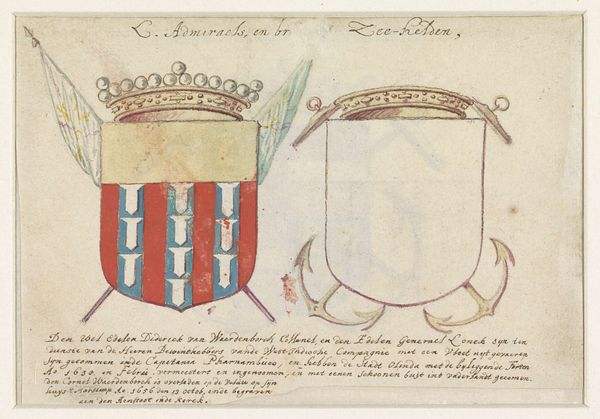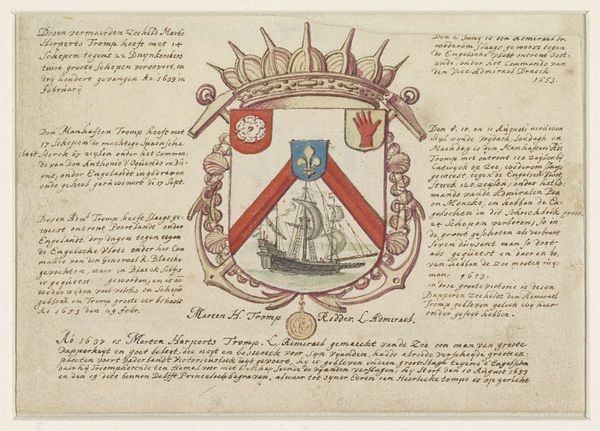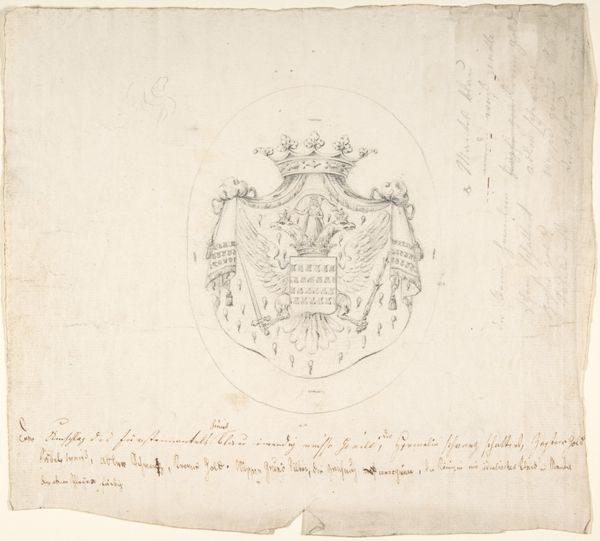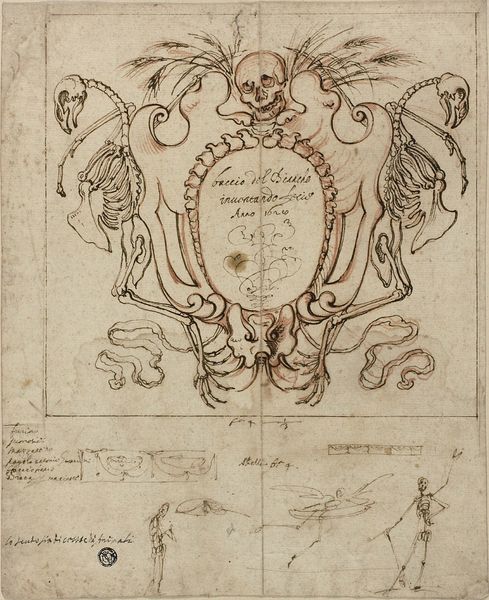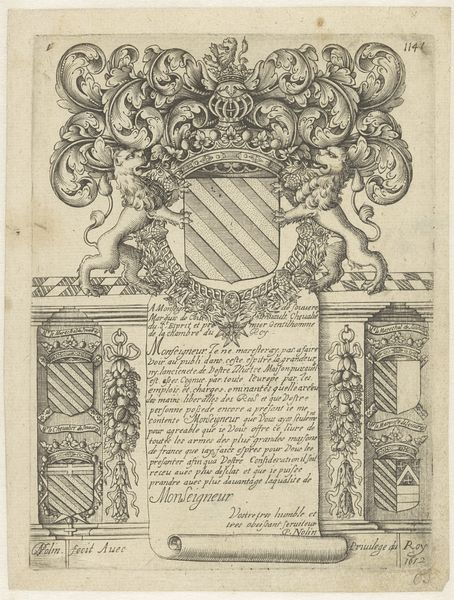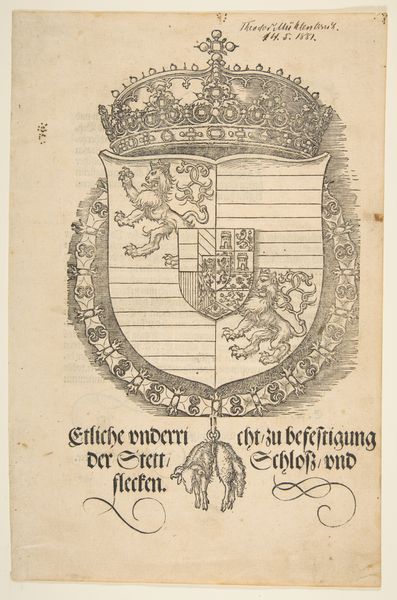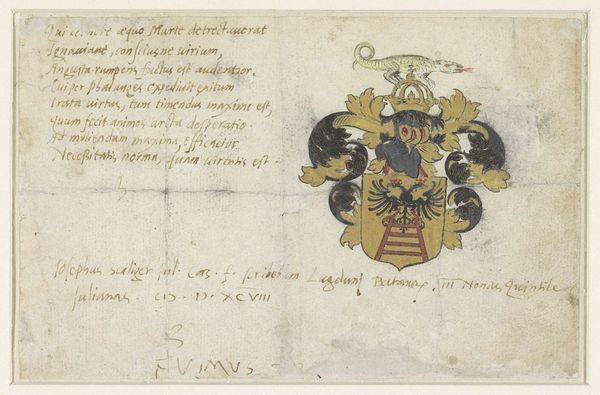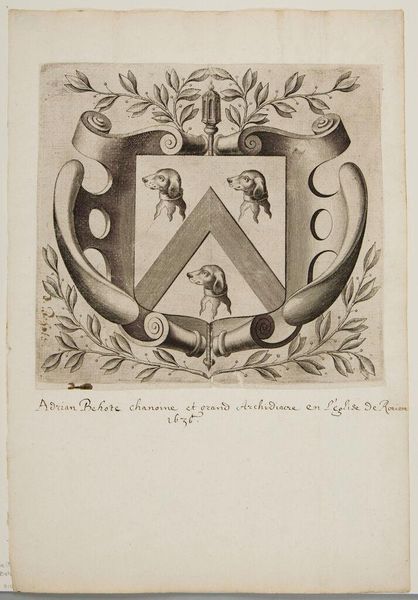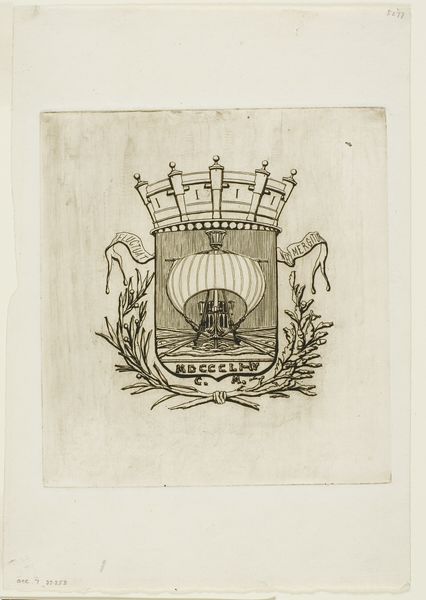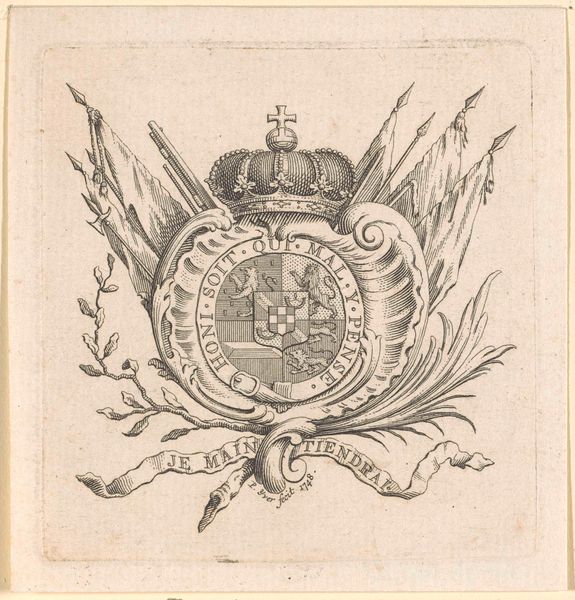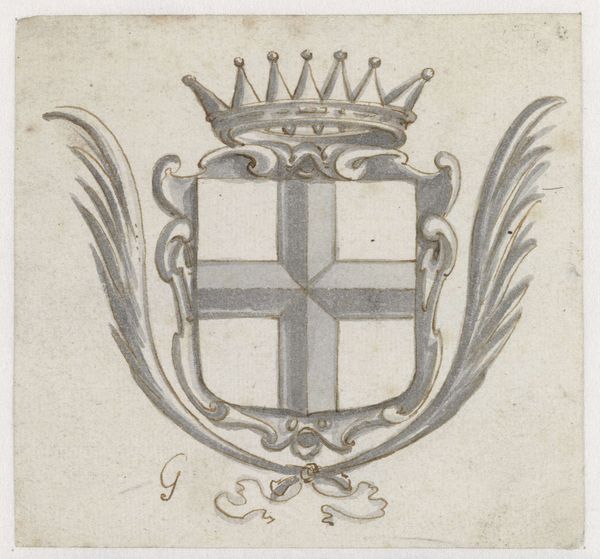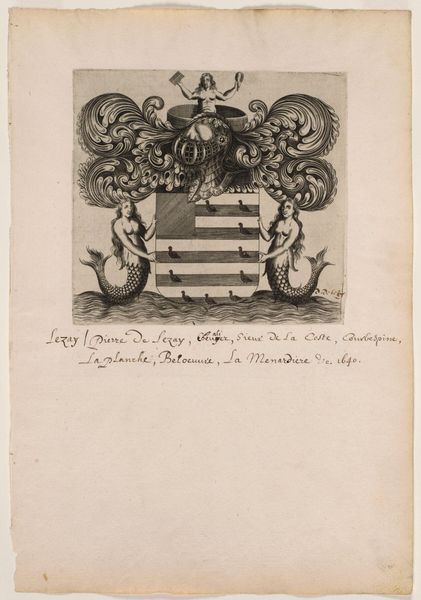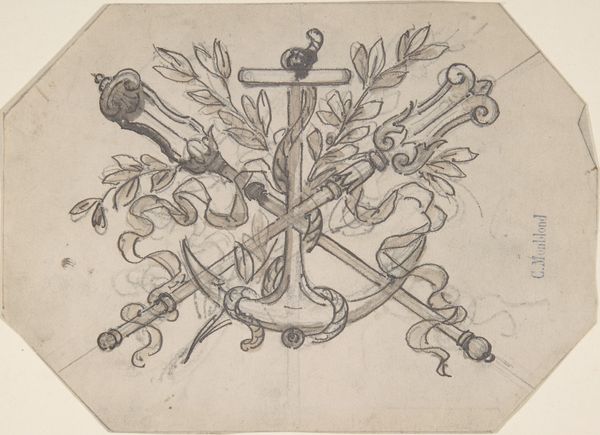
Wapen van Van Dorth en van admiraal Jacob Willekens en een leeg wapenschild 1623 - 1699
0:00
0:00
anonymous
Rijksmuseum
drawing, print, paper, watercolor, ink
#
drawing
# print
#
paper
#
watercolor
#
ink
#
coloured pencil
#
watercolour illustration
#
history-painting
Dimensions: height 97 mm, width 142 mm
Copyright: Rijks Museum: Open Domain
Curator: Here we have, "Wapen van Van Dorth en van admiraal Jacob Willekens en een leeg wapenschild", a drawing and print created between 1623 and 1699 by an anonymous artist. It combines ink, watercolor, and coloured pencil on paper. Editor: It’s interesting! The coats of arms have a very handcrafted, almost folk-art feel because you can so plainly see how it was made with multiple media. I find myself wondering, what were the social conditions that encouraged someone to create this object? Curator: Exactly! We must look at the conditions of production to understand its significance. It appears to be a hybrid of drawing and printmaking, suggesting a moment where artisanal craft intersects with nascent industrial processes. Who might have commissioned it and why? Perhaps they didn't have access to finer, more established materials to render the desired artwork. Editor: So the use of different media might reflect limitations, not just artistic choices. Were these types of heraldic images typically produced in a more standardized, formal way at the time? Curator: Most definitely. It seems as though it imitates conventional, more sophisticated examples using accessible, common resources. Consider that the creation of heraldry might be related to claims to land, birth-rights, or military merit, implying social mobility as something one must manufacture for themselves. Editor: That’s a fascinating point. The combination of materials—the blending of "high" and "low"—could indicate the democratization of image-making and identity. The artist took a readily-available process of making an etching or woodcut, combined it with handcrafting via watercolor, and effectively democratized the form. Curator: Precisely! And perhaps even intentionally challenged these societal concepts! What initially appeared conventional to your eye has materialized as being, quite possibly, subversive! Editor: I had never thought of it that way! I initially took these coats of arms as indicators of power or wealth, but now they also speak to access, production and labour, all within the broader social fabric of the time. Curator: And in viewing them as you have, we uncover not just what these drawings signify, but how and why they came to be.
Comments
No comments
Be the first to comment and join the conversation on the ultimate creative platform.
